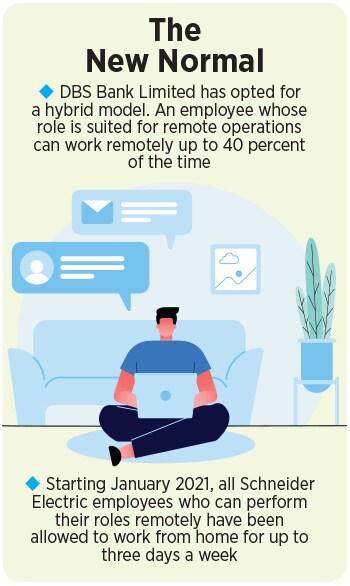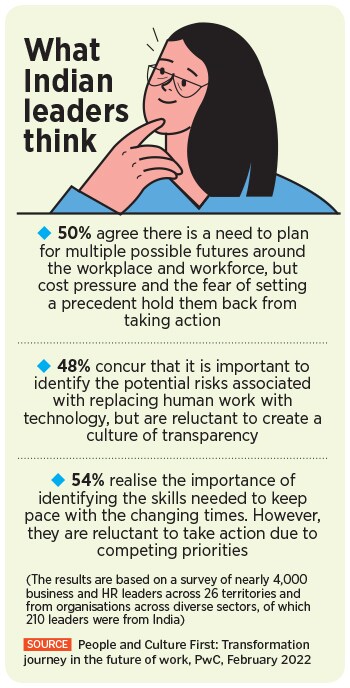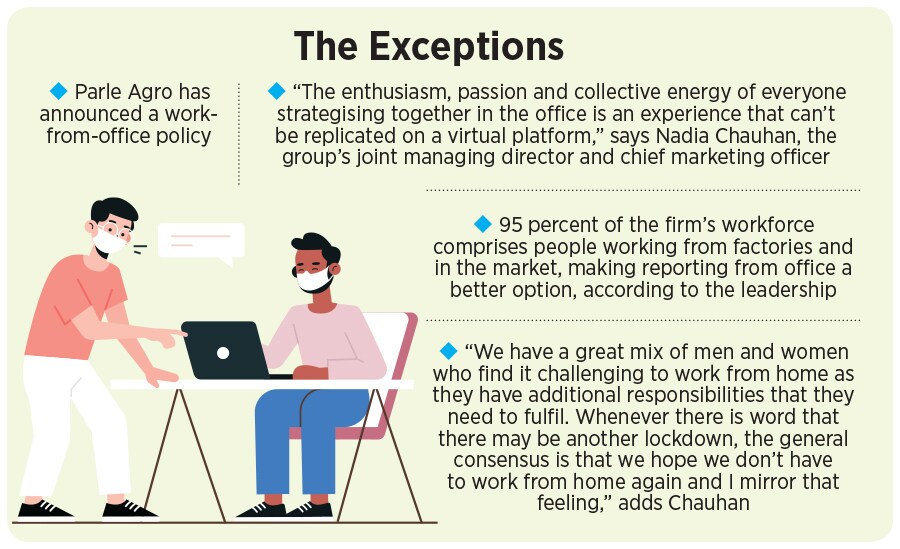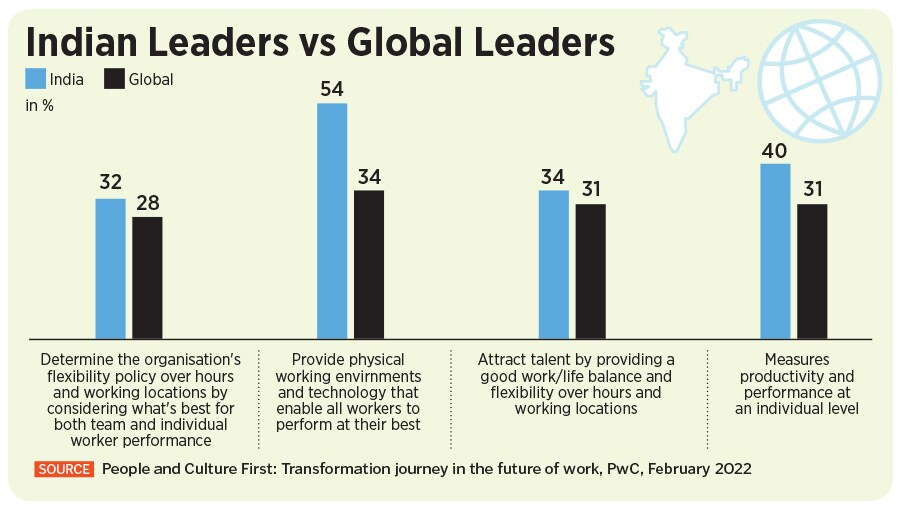
Hybrid is the new normal (for now)
For most employers and employees, there is no going back completely because the future of work is not in favour of returning to offices. And companies that try to turn the clock back to 2019 and insist on an 'all-office' model risk losing their best employees to competitors
Illustration: Chaitanya Dinesh Surpur The future of work is not in favour of returning to offices
The future of work is not in favour of returning to offices
In the pre-pandemic world, Yashpal Singh, 34, would spend two hours to and fro work, leaving him barely any time with his three-year-old daughter at home. He had resigned himself to fate till the Covid-19 outbreak prompted employers to implement the work-from-home policy. It came as a silver lining for Singh—not only did he save time and money, he claims his productivity also increased. And the icing on the cake: He has been able to see his daughter grow in front of him, every second, every minute. “I would like to work from home permanently,” says Singh, a resident of Jaipur, who is currently employed with an IT giant and does the night shift from 5.30 pm to 2.30 am.
It’s an option that’s ideal not only for Singh. Like him, many believe that if they are capable of working remotely—and if it has happened smoothly and effectively in the last two years—employers should not make it mandatory for them to return to office.
However, as the number of Covid-19 cases see a continuous fall across the country, most employers Forbes India spoke with hinted at implementing a hybrid model instead of allowing a permanent work-from-home structure.



 In the past six months, there were over 32 lakh searches for permanent and temporary jobs by Indians on naukri.com, a jobs platform. About 57 percent of these were for permanent
In the past six months, there were over 32 lakh searches for permanent and temporary jobs by Indians on naukri.com, a jobs platform. About 57 percent of these were for permanent  Most companies in other sectors such as ecommerce and consumer durables are following suit. Crompton Greaves Consumer Electricals Ltd. for instance, is offering a mix of hybrid and work-from-anywhere model. Various teams at the firm have been given the option to work from office or any other location. “A part of our leadership team—that is expected to be in the head office—is currently working from various places. In fact, I was working from abroad for a sizeable period,” says Satyajit Mohanty, vice president-HR.
Most companies in other sectors such as ecommerce and consumer durables are following suit. Crompton Greaves Consumer Electricals Ltd. for instance, is offering a mix of hybrid and work-from-anywhere model. Various teams at the firm have been given the option to work from office or any other location. “A part of our leadership team—that is expected to be in the head office—is currently working from various places. In fact, I was working from abroad for a sizeable period,” says Satyajit Mohanty, vice president-HR.







